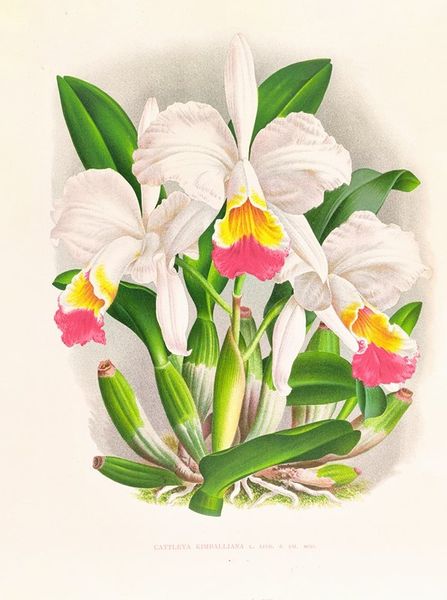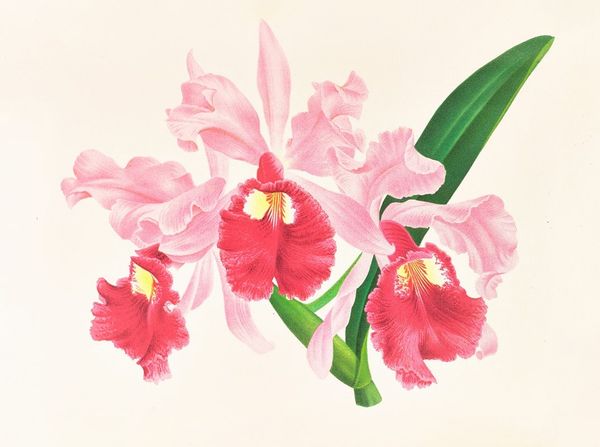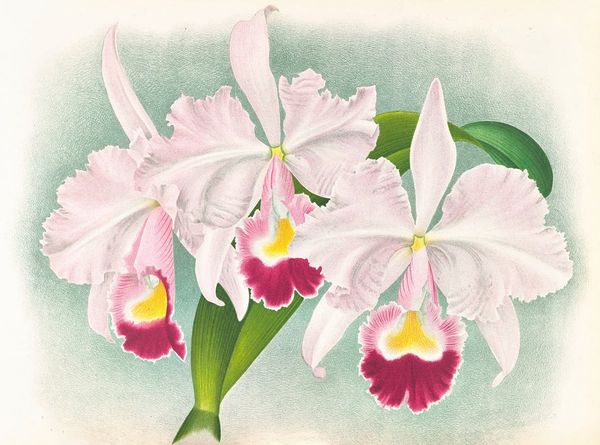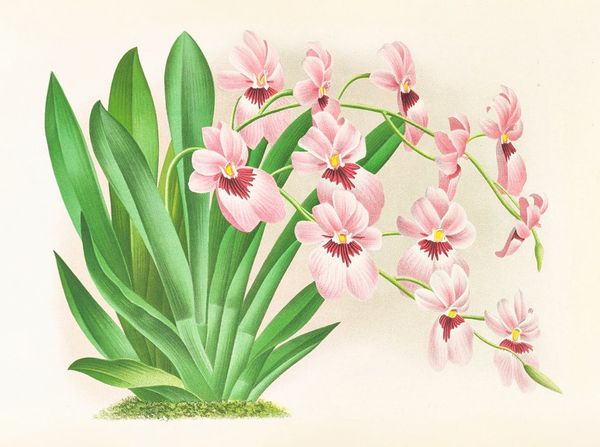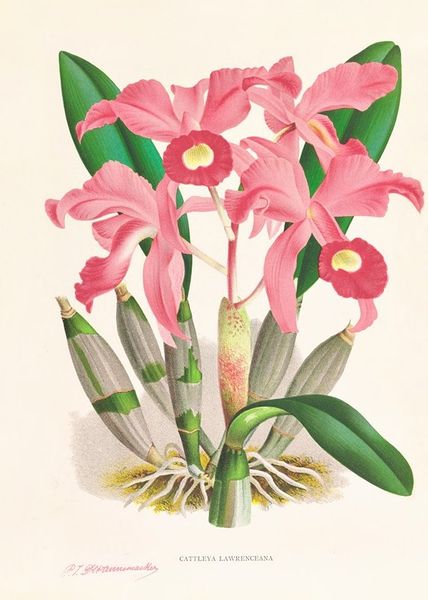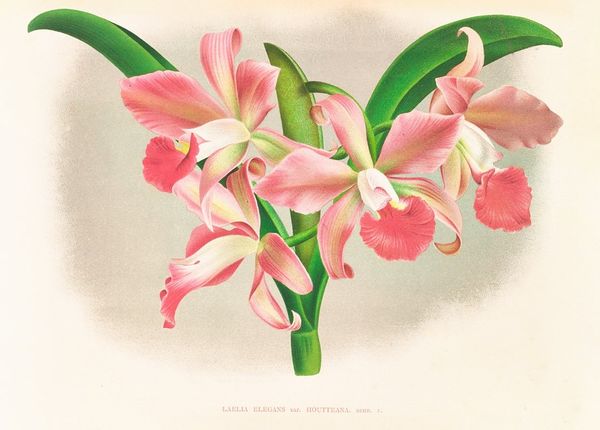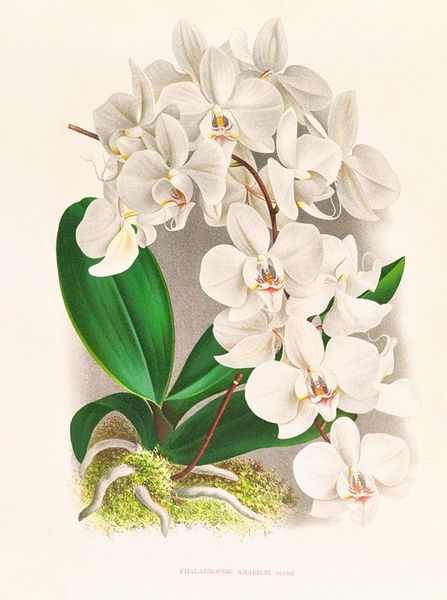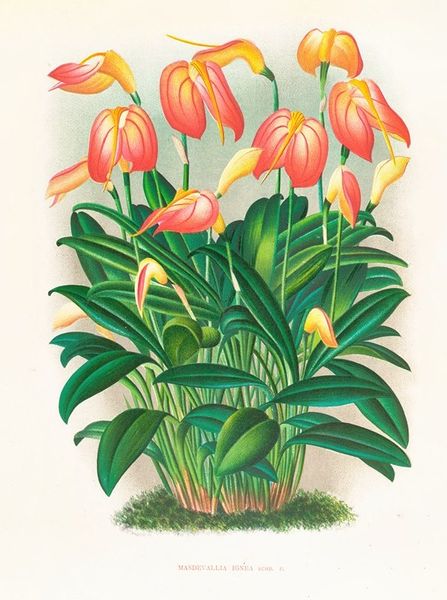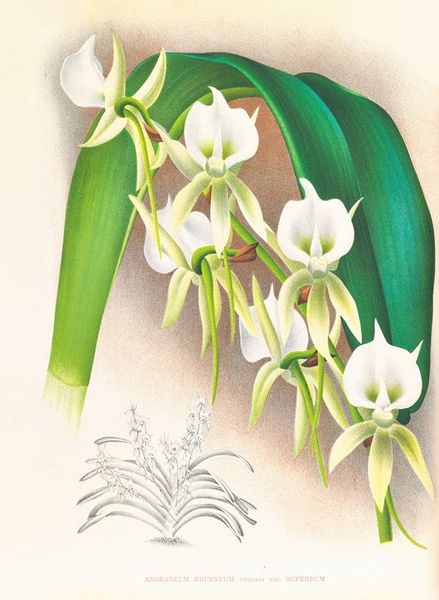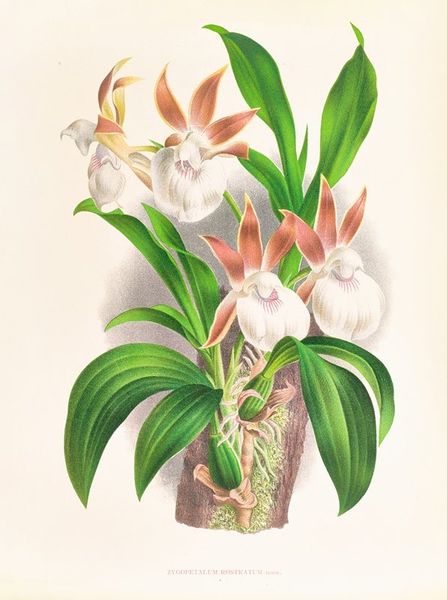
Copyright: Public Domain: Artvee
Editor: Here we have Jean Jules Linden's "Cattleya eldorado," a tempera painting likely created sometime between 1885 and 1906. I'm struck by how vibrant and meticulously rendered these orchids are. What do you see in this piece? Curator: It’s crucial to remember that depictions of nature, particularly in this period, aren’t simply innocent representations. Who commissioned these botanical illustrations? What role did tempera, a material often associated with earlier or “craft” based forms, play in comparison to more standardized oil production methods in shaping this image for commercial circulation? Editor: So, you're saying we need to think about the painting itself as a product? Curator: Precisely. Consider the Cattleya orchid itself. It wasn't native to Europe; its proliferation hinged on colonial resource extraction in South America and globalized trade routes. Who had access to these orchids and to depictions like this one? Who owned the means to create this image, and what profit motive existed behind this process? These details shape the artwork's very existence and should dictate our understanding of it. Editor: So the choice of tempera and the creation of the painting had economic implications? It's not just about accurately depicting an orchid; it reflects the social context of its production and consumption? Curator: Exactly! We also need to analyze the image's mode of production. Is it unique, or one of many produced for mass distribution using specific means? Think about where it might have been sold, who its likely buyers would be, and what purposes such images fulfilled. These details situate "Cattleya eldorado" within broader patterns of materiality and commercial culture. Editor: That is helpful! Thinking about the painting's creation and consumption really does shed new light on the botanical image itself. Thanks for the insights! Curator: Glad to offer a new perspective. Understanding art requires us to constantly question the materials and systems that shape it.
Comments
No comments
Be the first to comment and join the conversation on the ultimate creative platform.
